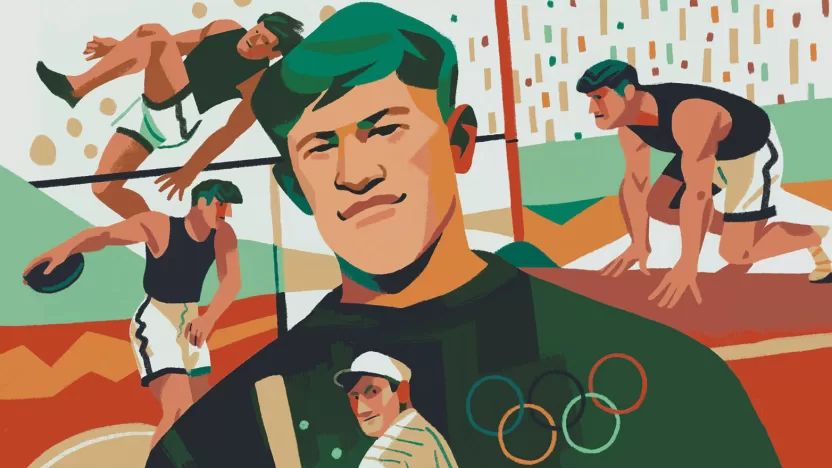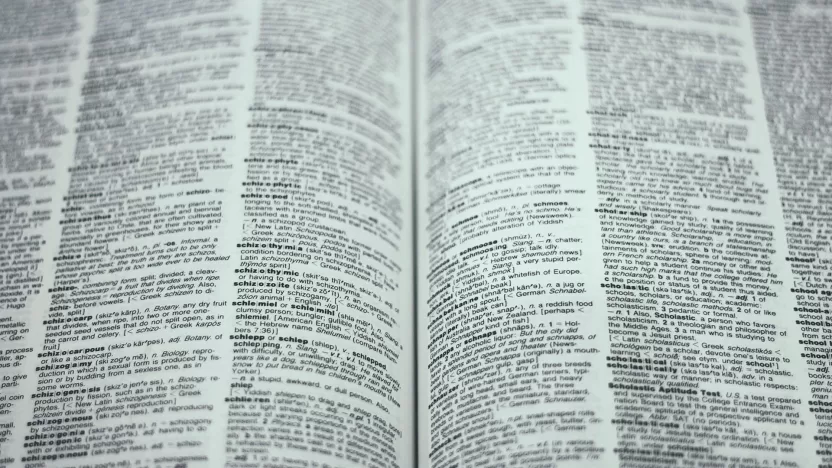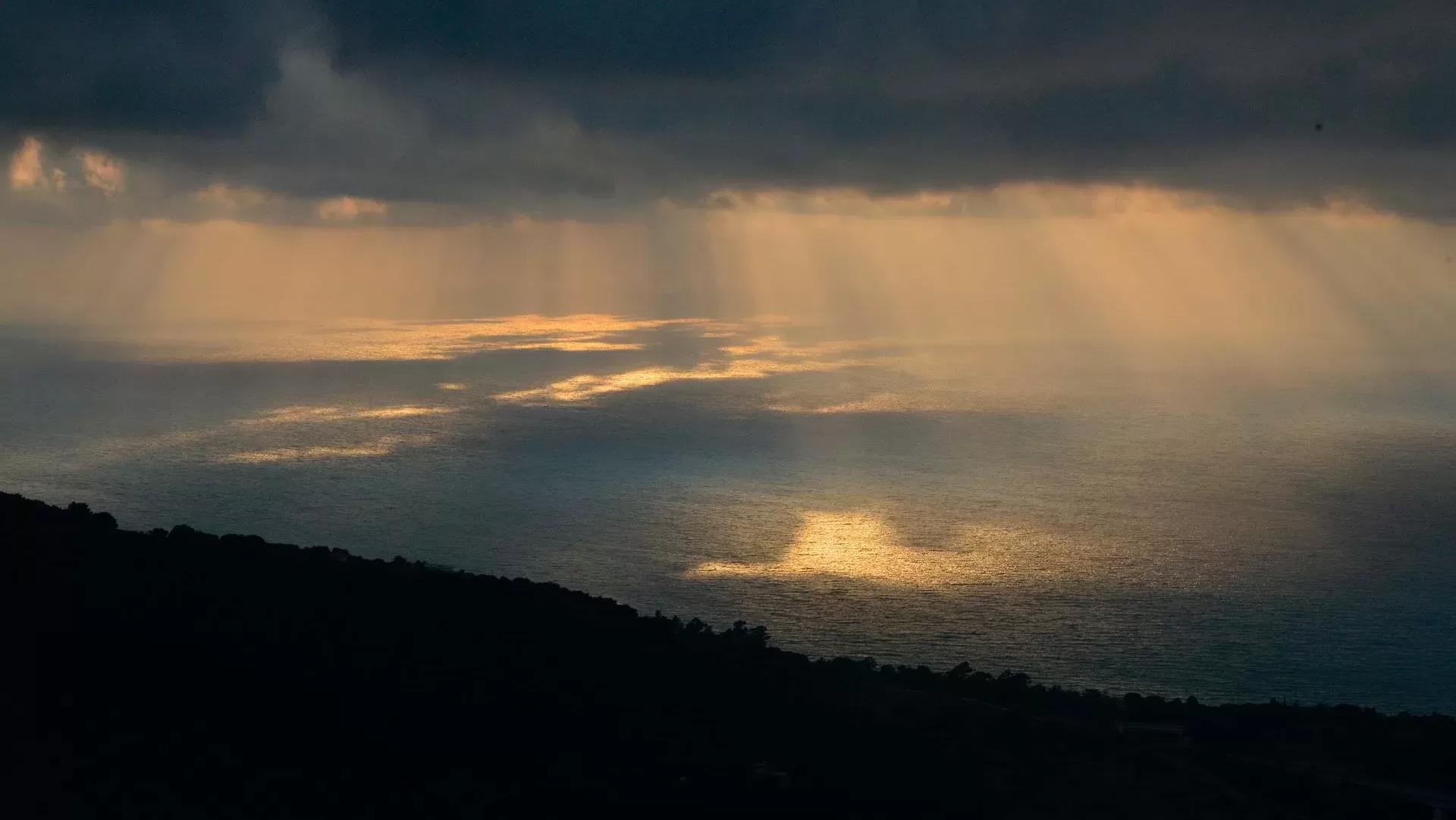
Diaspora
The places we are born and raised in can greatly influence our identity. But sometimes we must take it upon ourselves to keep alive the identity of the places we have to leave behind.
In conversation with Igiaba Scego by Alessandro Zaccuri
Photo by Nicola Lo Calzo. View of the Mediterranean Sea from San Fratello.
A few years ago, I happened to take part in a literary festival that had been involving authors in an ongoing photographic project for the past several years. That time, the project was to capture a tradition of the region where the festival was taking place, Sardinia. The so-called mamuthones are characteristic figures of the local folklore, clearly identifiable by their black masks. Their faces were also painted black to make them look more convincing, as we authors also had to do. The masks were painted on our faces, hoping that by doing so, our features would reveal something otherwise hidden. In my case, I feel the trick worked: the picture taken in Gavoi (the name of the town where the festival was held) is one I am most fond of. The guest of honor at the event, Spanish writer Clara Sánchez, didn’t have time to clean up her face and appeared on stage in that impalpable disguise, making her even more likable to the audience. However, before getting to that grand finale, there was a problem to be faced. The issue was raised by Igiaba Scego, who is indeed Black. In perfectly good faith, the organizers had suggested that she paint her face white, but the prospect of turning into a kind of Pierrot embarrassed her even more. Without relinquishing her characteristic politeness, Igiaba explained how, for an Afro-descendant like her, any allusion to the practice of blackface was unbearable. The story of the mamuthones may have been a different matter, but Igiaba was not willing to change her appearance. By common consent, we decided to repeat the previous year’s approach: instead of wearing a fake face, Igiaba would look out of a window, showing off her beautiful smiling face, as always framed by a pair of extravagantly framed glasses.
I think I learned a lot from that experience. Certainly I gained an even greater appreciation for the intelligence and determination of this writer, who was born in Rome in 1974 to a Somali couple who fled the country after the 1969 coup. Her father, Ali Omar Scego, had been a prominent political figure in the first phase of independence. In addition to being a fiction writer, with novels translated into several languages (notably My Home is Where I Am, 2010; Adua, 2015; The Color Line, 2020, due for release in October 2022 in the United States by Other Press), she is an essayist and activist. She often contributes to Italian newspapers, writes for children, and teaches university courses in several countries. A polyglot and cosmopolitan, she is a native Italian speaker. On her social media accounts, she calls herself Afro-Italian. “It is a term that not everyone supports — she admits — but in my case it can be a good trade-off. I have a complex identity: I am Black, of Somali origin, Muslim, Sunni, and Italian. If I were to follow my instinct, I would call myself Roman, and that’s it. Roman and Romanista, to be precise,” she concludes, alluding to her passion for one of the capital’s two football teams, AS Roma, famous throughout the world for the feats of captain Francesco Totti.
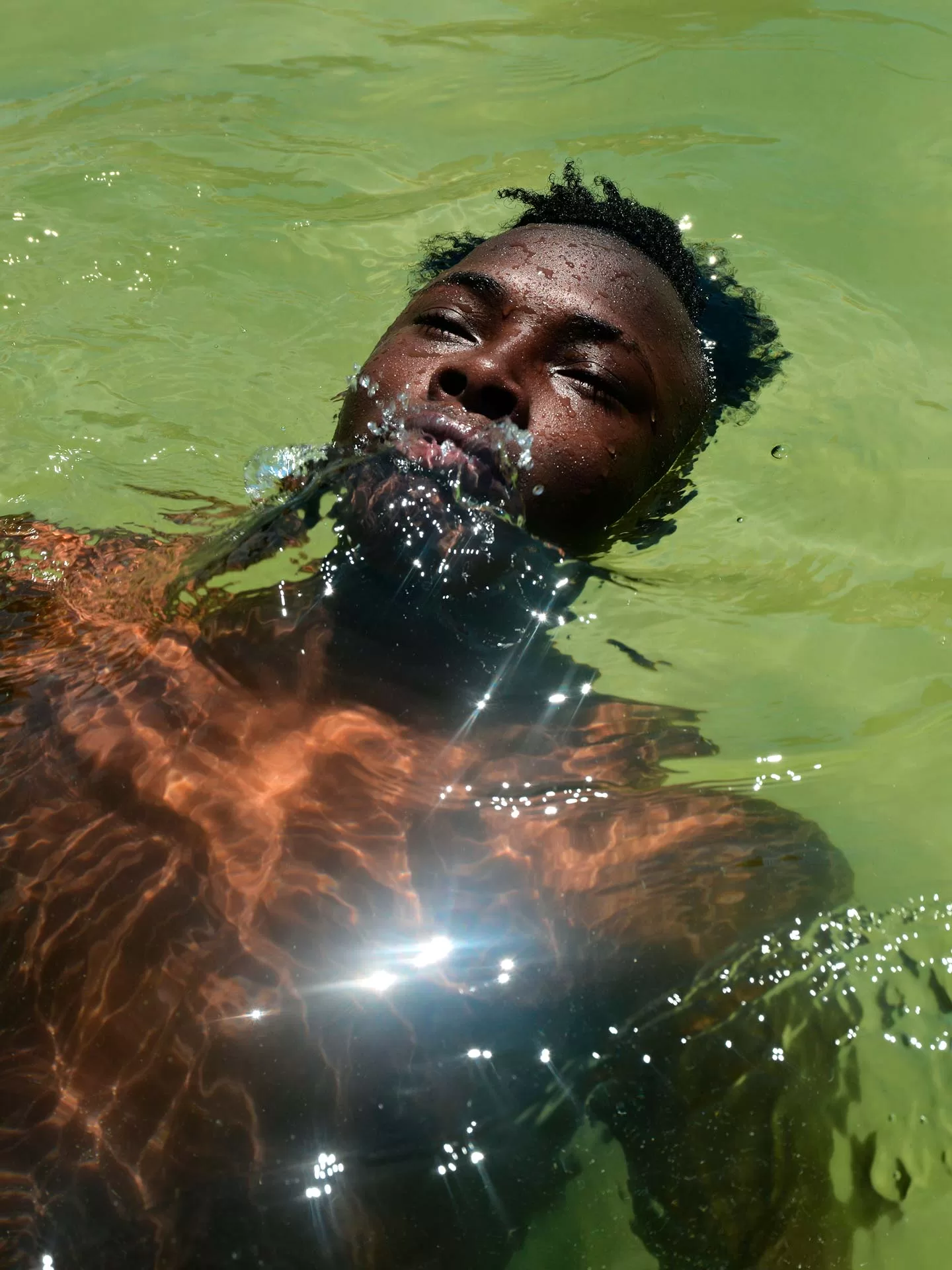
Photo by Nicola Lo Calzo. Abdul, Ivorian, Mondello Beach, Palermo. This photo was taken during a day at the beach that Abdul spent with his friends in July 2018. “Binidittu” is a project made by artist Nicola Lo Calzo (Turin, 1979) who, through the tale of the life story and cultural heritage of Benedict the Moor, examines the relationship between the history of colonialism and contemporary cultural identity in the Mediterranean Sea. Born from sub-Saharan slaves at the start of the 1500s somewhere around Messina and subsequently raised as a Franciscan in Sicily, Saint Benedict, called Binidittu, not only became the protector of both Palermitans and afro-descendants in Latin America, but also an icon of redemption and emancipation: a political symbol of the fight against racism.
However, identity is not a simple matter for an Italian like me. My grandparents come from four different regions, ranging from the North to the South of the peninsula. I was born in La Spezia, Liguria, but I’ve lived in Milan for half a century. When people ask me where I’m from, I never know how to answer.
Yes, Italy is a special case. The country achieved unity late in its history, in 1861, and it was a unity of intent rather than of substance. The attachment to individual regional or city identities (what in Italy is called campanilismo) has always persisted and tends to become even more intense in times of crisis. In my opinion, the crucial point is precisely this: we live in a historical and social context in which identity is returning to be rigid, immutable, and non-negotiable. And this is very risky because it leads to identifying individuals with a single element of their identity: skin color, religion, clothing, gender, sexual orientation… These are the “homicidal identities,” as defined by the French-Lebanese writer Amin Maalouf in his In the Name of Identity, a book that has been of fundamental importance for my education.
You study identity, but for you, identity is not just a study topic.
Let’s just say that I realized the issue’s complexity fairly early on. You see, my older siblings came to Europe later, some already as adults, and it was only then that they became Black. In contrast, I was Black right away, and right away, someone pointed it out to me. I was the only Black kid in my neighborhood and in my school for a long time. This made me wonder about the history of my family and Somalia in general. My mother was born into a tribe of shepherds and lived as a nomad until she was ten years old, amassing a wealth of verbal stories that I often draw upon for my books. On the other hand, my father was from a coastal town, Brava, and his first language was the local idiom, Bravano. Even initially, it was difficult for me to recognize myself as having a single identity.
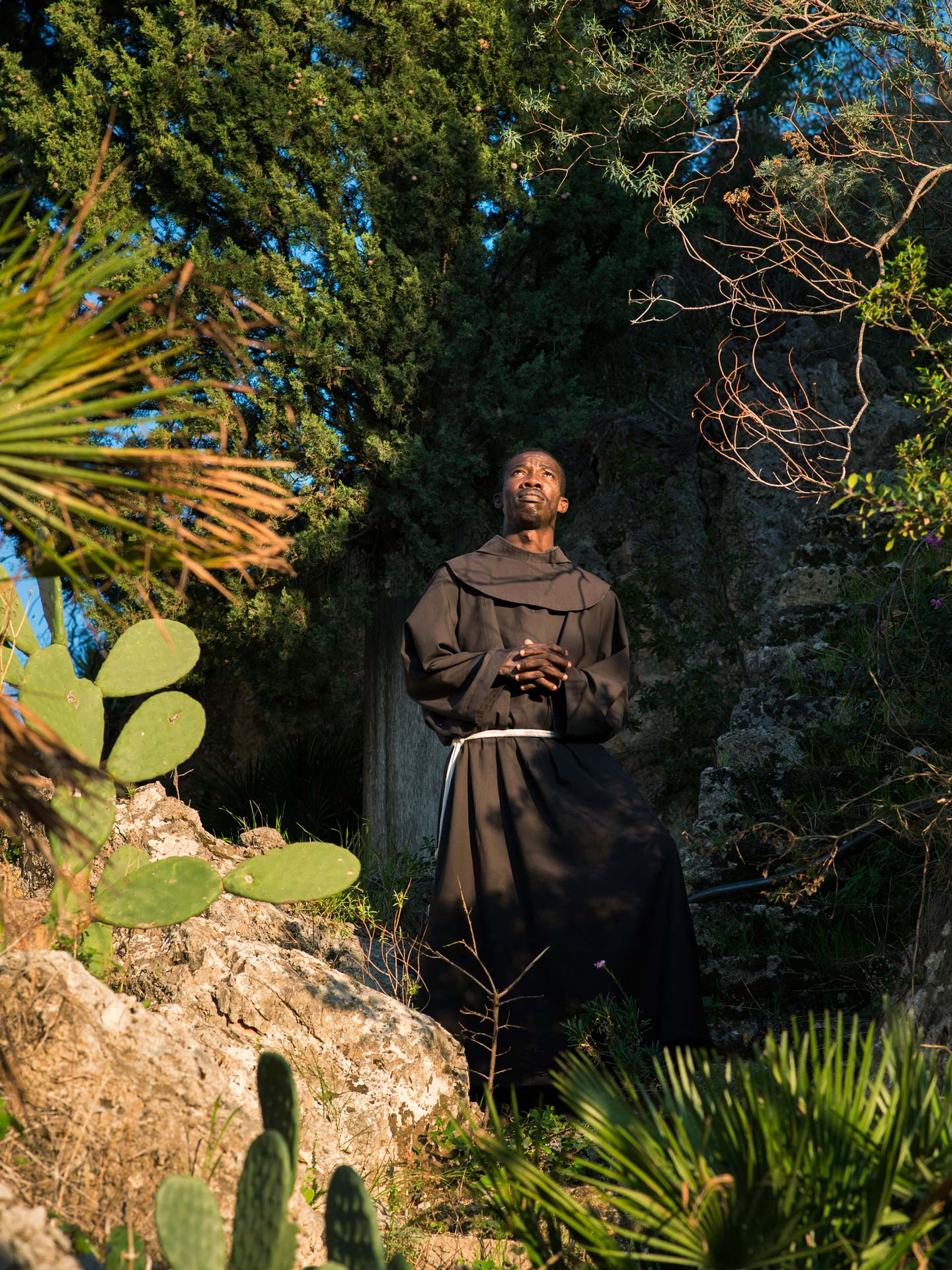
Photo by Nicola Lo Calzo. Friar Dieudonné Benedetto. This portrait was taken on the occasion of a speech that Friar Dieudonné gave in the Convent of St. Anthony in Bagheria after a violent, racist attack against a young black man.
I would say that all writers and readers experience this same condition through literature: when one reads or writes, one realizes that there is always something unexpected and even unknown within oneself.
As far as I am concerned, literature taught me about Africa. I discovered it late, because my studies were focused entirely on Europe. I got my degree in Rome with a dissertation on the representation of Arab characters in classical Spanish literature, from the Cantar de mio Cid to Cervantes, and I have always read a lot of English-speaking authors. Two Afro-Americans, James Baldwin and especially Malcolm X, helped me understand the subject and painted a picture of a crude, biological racism, in many ways similar to the one seen in Italy in the 1990s. Then came Latin American literature, from Eduardo Galeano to Gabriel García Márquez, which raised my awareness of colonial history. But all this was not yet Africa. Africa, for me, was a woman’s book, Nervous Conditions by Tsitsi Dangarembga, the Zimbabwean writer who was awarded the Frankfurter Buchmesse International Peace Prize last year. At that point, I realized that I, too, had a story to tell, and I, too, could write it.
Is it fair to say that your books belong to African literature?
No, it is European literature and, at the same time, it is the literature of the diaspora. Moreover, it is almost impossible to clearly define what African literature is. If anything, there are as many literatures as there are languages and cultural traditions on the continent. Not to mention the differences between upper-class authors, who tend to be more numerous, and the increasingly lively voices of the working class. It is a very dense stratification, whereby each level masks another. The situation is also very diverse on the publishing scene. Only recently, for example, a book as important as Frantz Fanon’s The Wretched of the Earth has been translated into Somali. In general, Somali literature is in a transitional phase because it uses a language that, for centuries, has been the oral language of singers and has not yet found fluency in writing. A critical thrust, especially from the publishing perspective, is coming from the diaspora community.
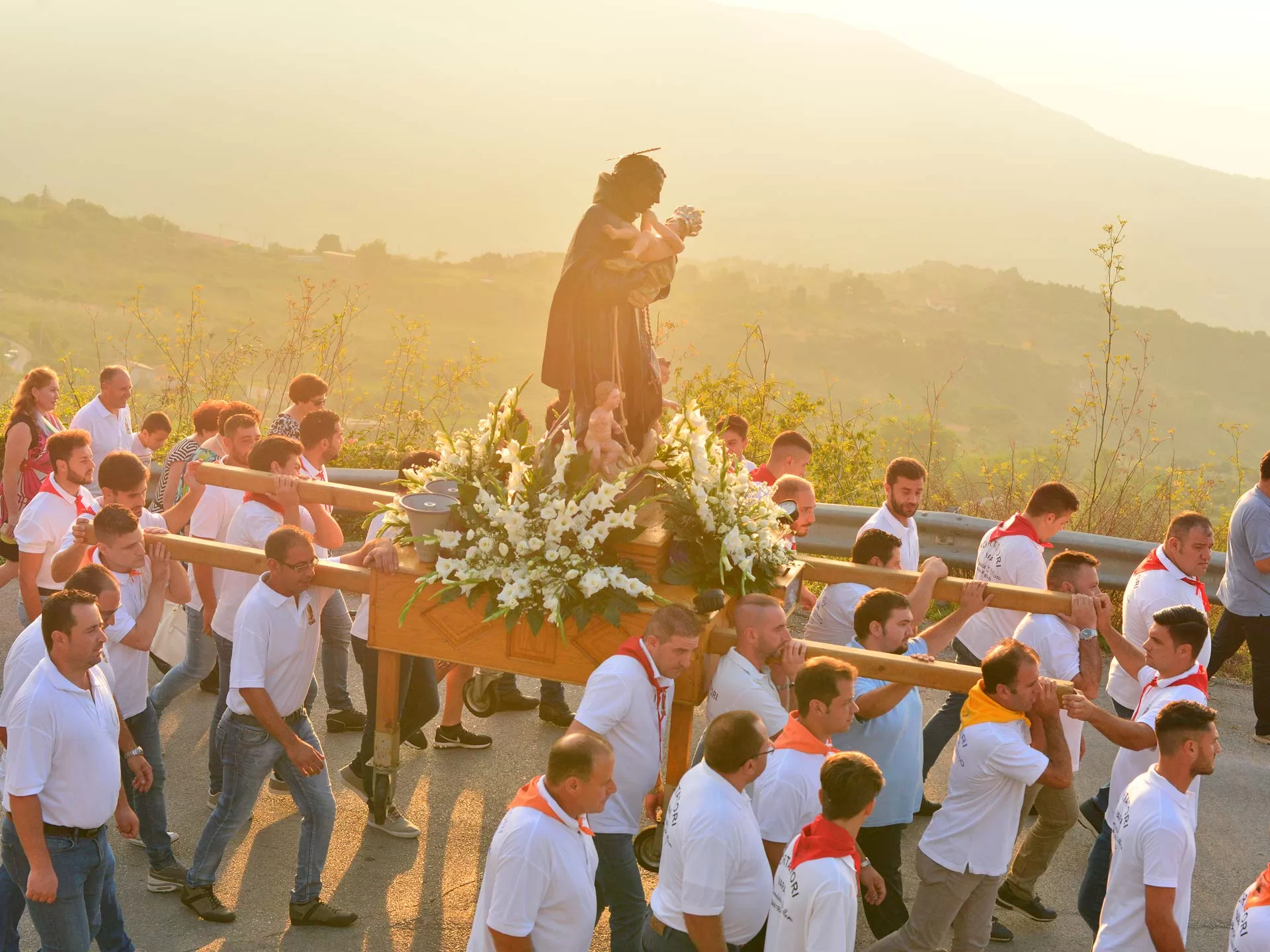
Photo by Nicola Lo Calzo. The bearers of the statue of Benedict during the vigil procession that takes place in September of each year in San Fratello, the birthplace of Benedict in 1524.
This is a concept you frequently come back to. It seems to me that you usually prefer to talk about diaspora instead of migration.
Migration focuses on only one element, movement, and forgets everything else, which is precisely diaspora, with all its complexities and contradictions. Let me return, once again, to my family’s story. We are scattered across various places in the West: Seattle, Virginia, Manchester, Nairobi, and Rome. Despite this, Somalia is alive within us, in the language we use, in the interest we continue to take in the events of our country. Likewise, it is alive in the other languages used by writers of Somali origin, such as Nuruddin Farah’s English. Our culture itself is nomadic; we are used to always being in transit, always considering any settlement temporary. For us, identity lies in this journey, in this never-ending motion. Along the way, we make many acquaintances, we come across marvel and horror, but no door ever closes forever.
From how you describe it, it sounds like an enviable condition.
Actually, the diaspora has a price, and it is also quite expensive. You are no longer genuinely African; you are no longer part of the continent. You risk being treated as a tourist when you return, as happened to me and many other Somalis traveling in the country. However, my generation is still a lucky one, having been able to see a Somalia that was later scarred by war. For today’s young people, Mogadishu is a city of rubble, which is only being removed to make room for the high-rise buildings popping up everywhere.
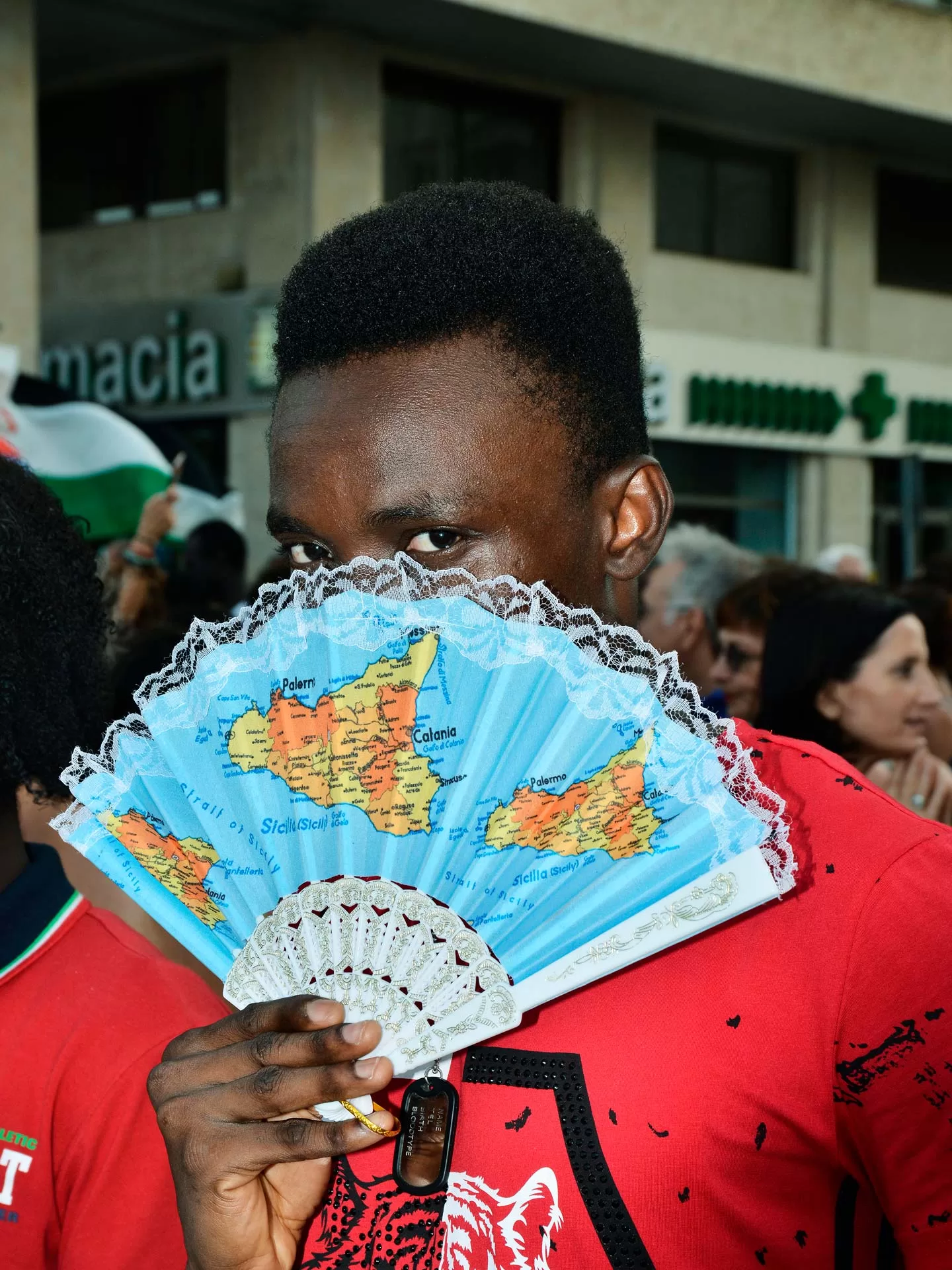
Photo by Nicola Lo Calzo. An activist for immigrants' rights, during the “Open the ports” demonstration, Port of Palermo.
At the beginning, you mentioned your religious belief. This is also a component of identity and not the least of them. Do you agree?
Certainly. I don’t often mention it in public, but Islam is an essential part of my daily life and profoundly influences my writing. For me, it’s not just a cultural interest, but one that is very intense towards all forms of spirituality. I am a devout Muslim; I pray five times a day and observe Ramadan. Up to a certain point, it seemed that this was the problem. They used to wonder how I could be an intellectual and also pray.
For that matter, they ask me, too, and I’m a Catholic.
Yes, but since 9/11, everything has become more complicated. I had to justify being a Muslim; I had to get used to explaining that Islam is a religion of peace and that it doesn’t make sense to talk about “moderate Islam.” Either you are a Muslim or you are a terrorist, there is no middle ground. One of the most ferocious organizations, al-Shabaab, is rooted in Somalia, and in Somalia, as elsewhere, Muslims are the first victims of attacks. The need to delve into the history of my faith has led me to approach Judaism and Christianity, which are the other religions in the book, with further respect. I told you I’m Roman, right? Well, in Rome, the Church is everywhere, but there is also the Ghetto, and the Synagogue.
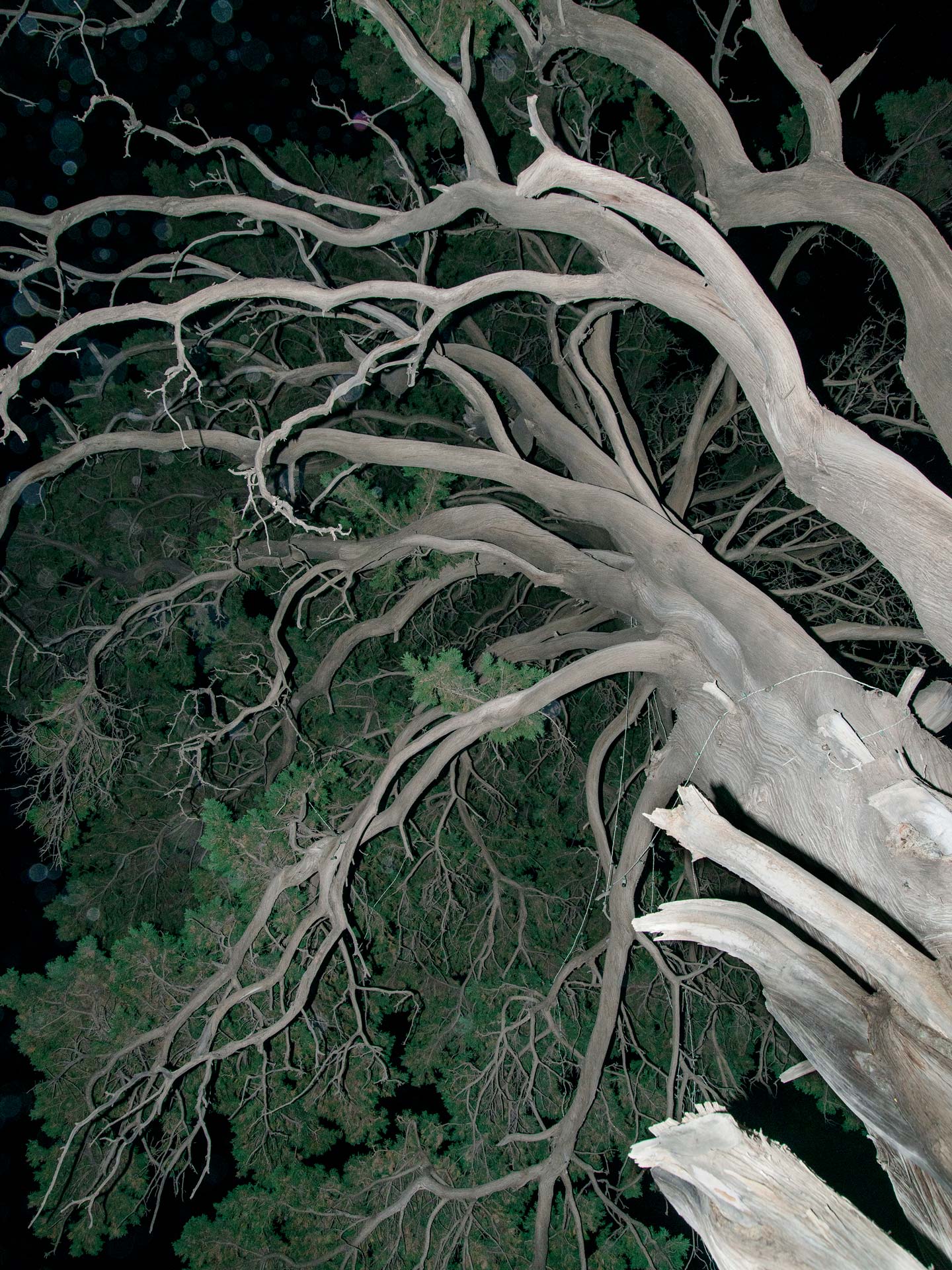
Photo by Nicola Lo Calzo. Benedict’s tree. According to the tradition, this 400-year-old cypress comes from the miraculous rooting of the cane of Benedict the Moor during one of his prayers on Mount Grifone. It is regarded as one of the oldest cypress specimens in Italy. Palermo.
In this conversation, we have been coming back often to the importance of places.
True, but time is a factor that is no less decisive in the shaping of an identity. On one hand, demographic time makes me notice that I am no less angry than I was young but more capable of using my anger effectively. On the other hand, there is historical time: those who, like me, have known the twentieth century, those who have direct memories of the Cold War and other events of the past decades, have necessarily developed a more comprehensive view of reality.
Couldn’t it be that identity lies at the nexus of personal history and collective history?
It could be, yes. As long as it is a moving image and not a static one. Otherwise, any identity becomes a trap.

